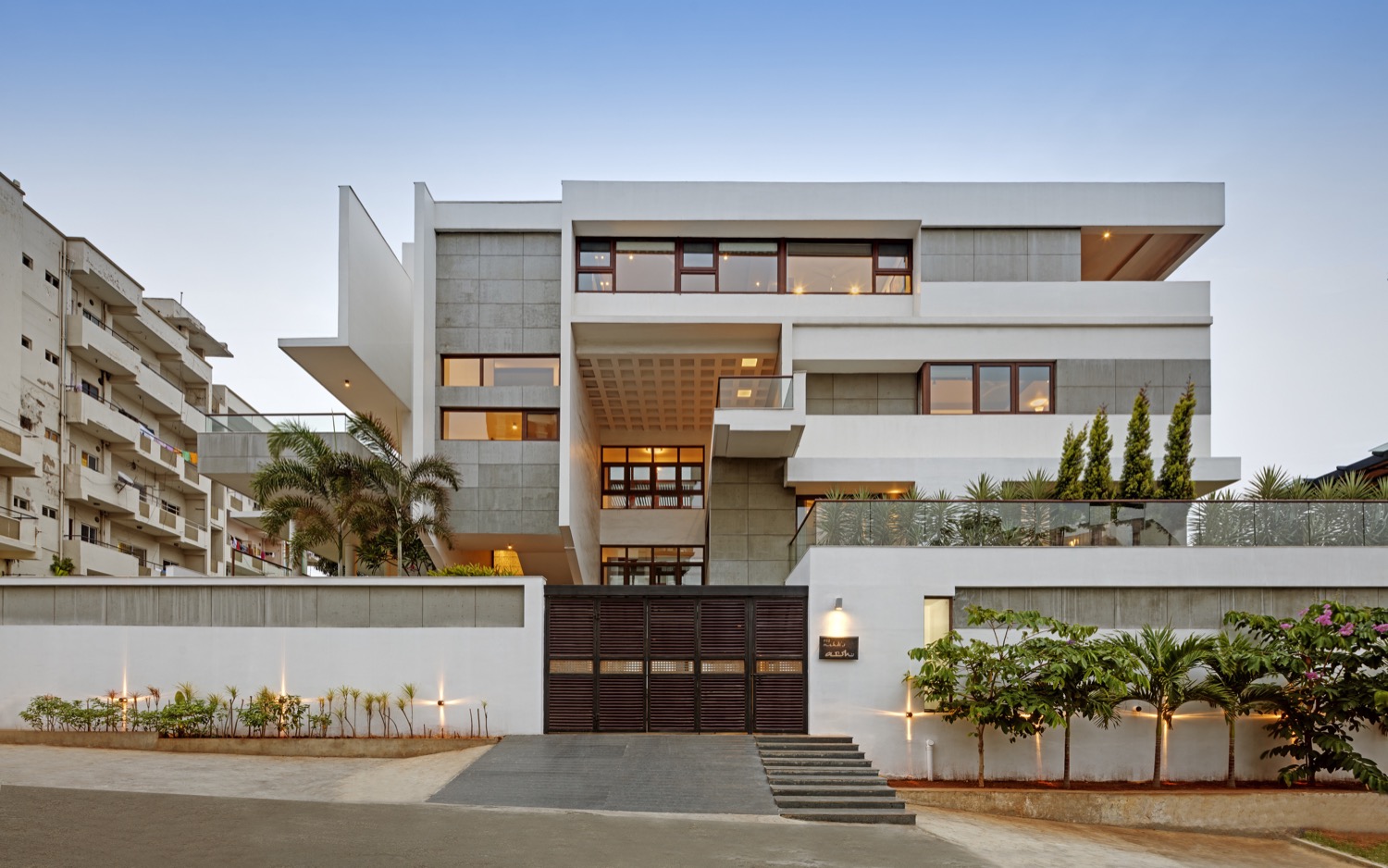 HKS house is located uphill in a quiet residential neighborhood in Visakhapatnam. The owners wanted a home with clearly delineated private spaces for the family, and a separate block to host guests and events. The building is therefore conceived as two programmed volumes held together by a bridge-corridor, landscaped courts, and shaded terraces.
HKS house is located uphill in a quiet residential neighborhood in Visakhapatnam. The owners wanted a home with clearly delineated private spaces for the family, and a separate block to host guests and events. The building is therefore conceived as two programmed volumes held together by a bridge-corridor, landscaped courts, and shaded terraces.
At the ground level, the owners can park, meet visitors at a home-office and organize shows at the gallery. Guests are either led up to an entry stairway to the verandah, or towards the north lawns for a celebration. The northern volume also holds a formal living room, a covered deck for brunches and whirlpool bath-lounge, for the children and their guests. The eastern court and bridge together form the pivot of the home. It is both open and enclosed, and offers varying degrees of interaction between the private and public areas of the building. The bridges (on first and second floor) are capped with a large coffered floor that forms a façade recess, causing a low pressure zone, forcing the north easterlies through the core of the house.

The second volume includes five large bedrooms along the southern edge, all reaching out to either capture views or winds from the Bay of Bengal. On level one, the old and young meet in the family lounge and western deck. This block also includes a double-height formal dining room, kitchens, utility spaces and staff accommodation.
HKS house has deep overhangs, thick edges and wrap around greens, intended to keep a large internal volume as cool as possible. The exterior faces are rendered in smooth white and granular grey (cement plaster panels); mild textures to attenuate the effects of saline air and coal dust from the port nearby.
Drawings:
Project Facts:
Project name: HKS House
Architect’ Firm: SDeG
Website: www.sdeg.in
—
Design Lead: Sujit Nair, Balaji T
Project Team: Sujit, Balaji, Hari Krishna, Pratibha, Gayathri, Shoaib, Siddharth
Project location: Visakhapatnam, Andhra Pradesh, India
Google Map Location – https://goo.gl/n6PSD4
Completion Year: 2017
Gross Built Area (square meters or square foot): 1364 m2
Photo credits: Shamanth Patil
Photographer’s website: www.raysandgreys.com
Other participants
Structural Consultant – ISA Consultants
Electrical Consultant – PK Consultants
Interior Contractor-Krafts






















